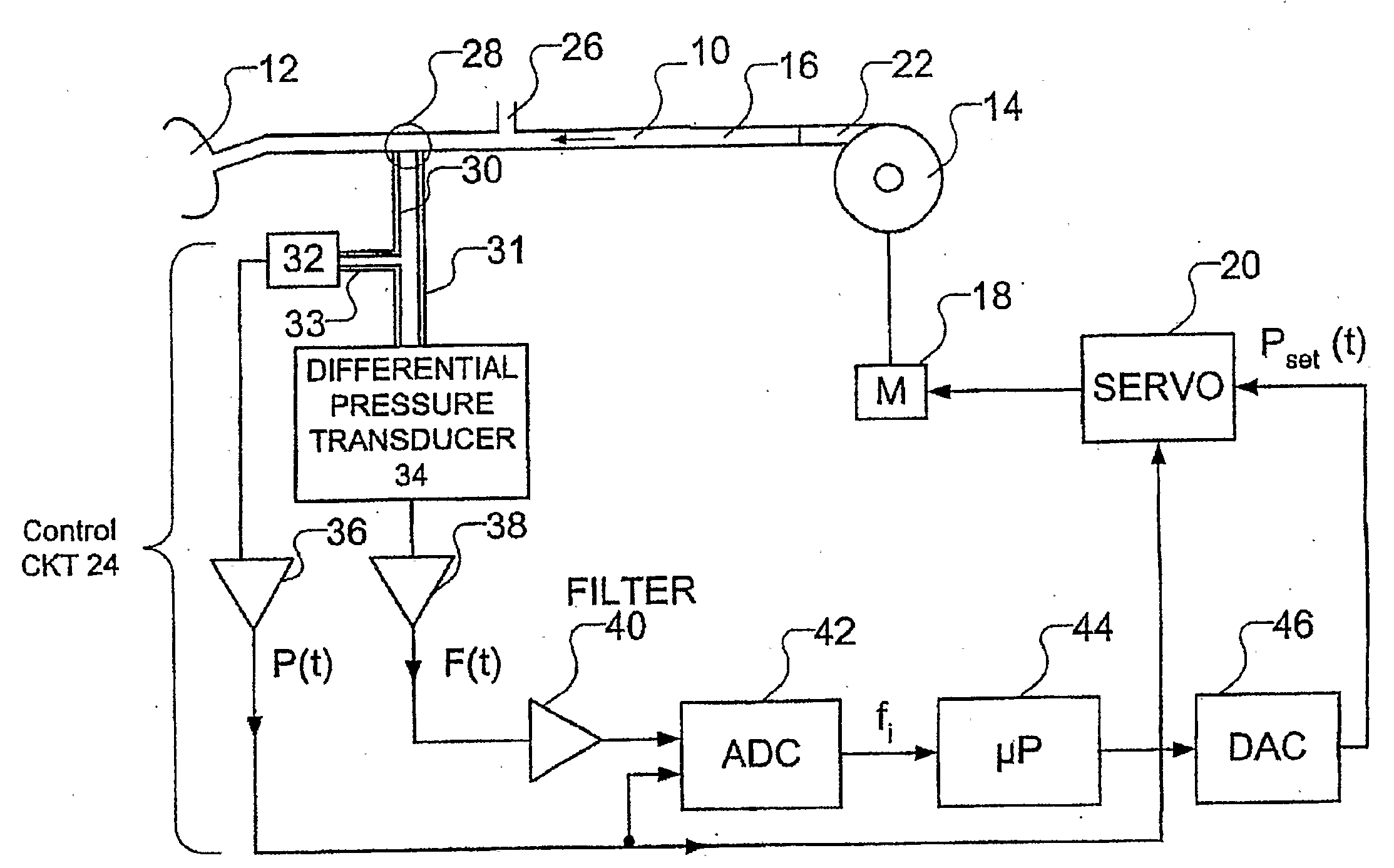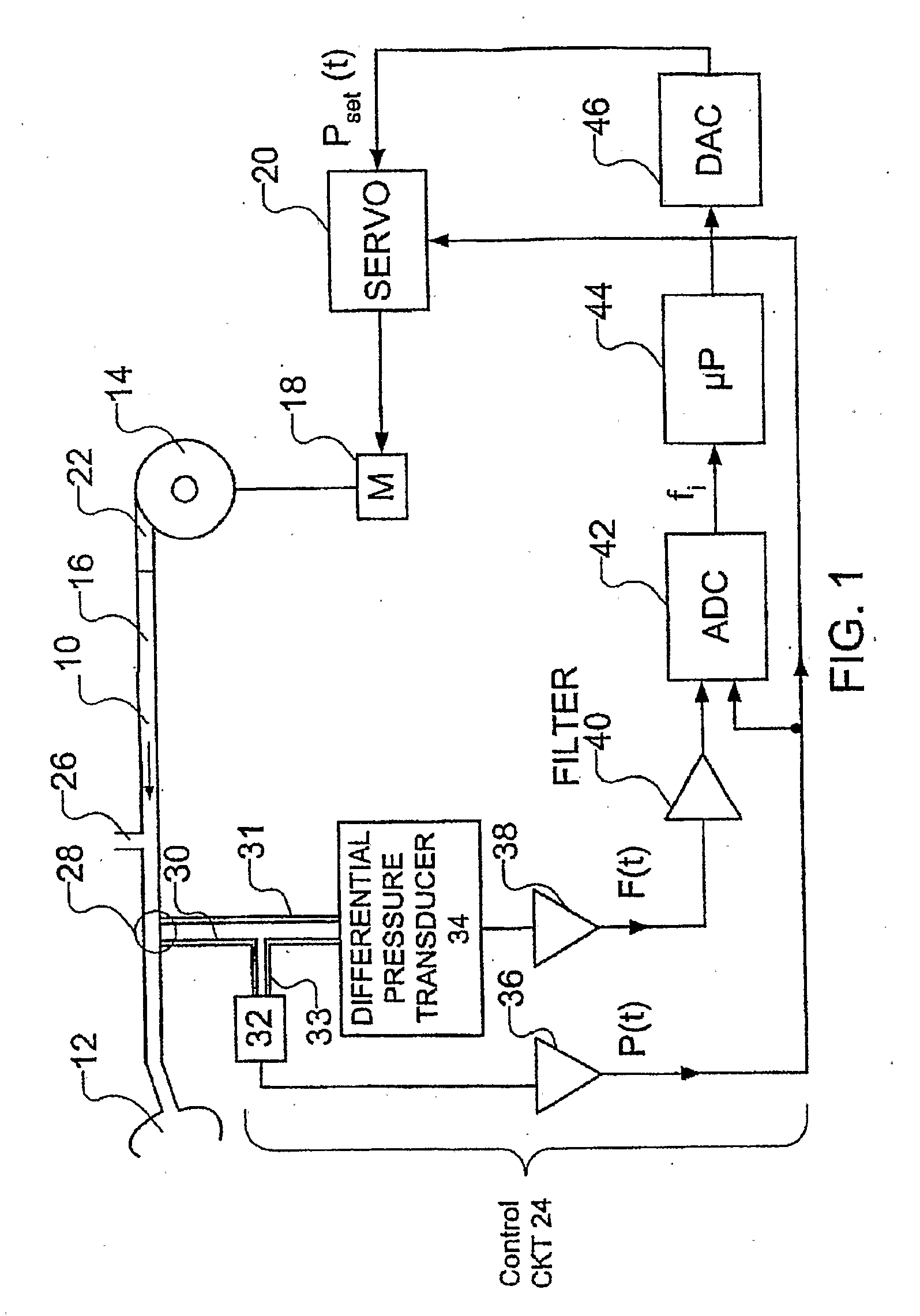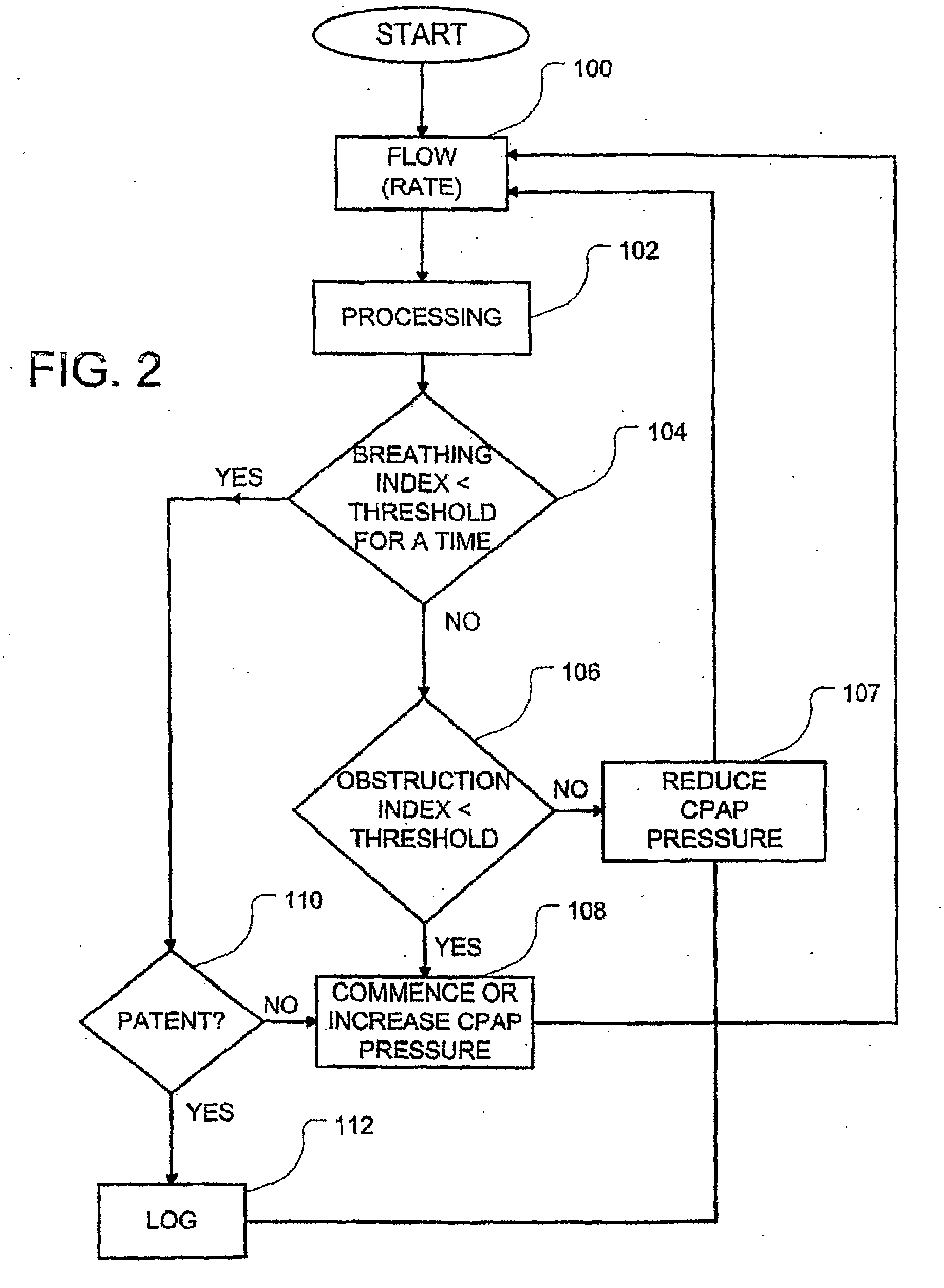Method and apparatus for improved flow limitation detection of obstructive sleep apnea
a technology for obstructive sleep apnea and detection methods, applied in the field of improved methods and apparatus for the diagnosis and treatment of respiratory conditions, can solve the problems of not being able to detect flow limitation in certain types of flow patterns, affecting the function of the valve, so as to remove any expiratory pause
- Summary
- Abstract
- Description
- Claims
- Application Information
AI Technical Summary
Benefits of technology
Problems solved by technology
Method used
Image
Examples
second embodiment
[0076]In a second embodiment the method comprises 1) estimating peak flow in the middle portion (e.g. a third) of the wave 2) any point outside that portion (e.g. in the first and / or last third of the said wave) that exceeds the peak flow is reset to the average of the sample before and after. 3) The process continues until no sample in the outside portions is greater than the peak flow. This method again reduces the impact of the overshoot—while also maintaining the shape of the waveform.
[0077]In a third (preferred) embodiment the method consists of 1) Dividing the wave into n parts and calculate mean amplitudes for each part. 2) Apply logic to determine what sort of wave the pattern indicates. 3) If overshoot is indicated, mark flattening as low.
fourth embodiment
[0078]In a fourth embodiment the method consists of 1) Calculating estimate of flattening for every n samples in the middle half of the wave (e.g. calculate flattening for sample 16 . . . 24, 17 . . . 25, and so on). 2) Marking the flattening index as the value that corresponds to the lowest value obtained for all sample permutations.
Alternative Statistical Calculation for M-Shape Detection
[0079]An alternative embodiment of the invention uses a different measure to determine whether an inspiratory wave pattern has an M shape. The technique is to decompose the inspiratory wave into a vector of features (floating point numbers) and a matrix pair of basis vectors that are orthogonal. Normalizing the time interval so that inspiration begins at zero and ends at B radians, the basis vectors may be chosen to be sin (Bt) and sin (3Bt). The inspiratory waveform is thus fit to the curve a sin (Bt)+b sin (3Bt), where a and b are determined by fitting the basis vectors to the inspiratory wavefo...
PUM
 Login to View More
Login to View More Abstract
Description
Claims
Application Information
 Login to View More
Login to View More - R&D
- Intellectual Property
- Life Sciences
- Materials
- Tech Scout
- Unparalleled Data Quality
- Higher Quality Content
- 60% Fewer Hallucinations
Browse by: Latest US Patents, China's latest patents, Technical Efficacy Thesaurus, Application Domain, Technology Topic, Popular Technical Reports.
© 2025 PatSnap. All rights reserved.Legal|Privacy policy|Modern Slavery Act Transparency Statement|Sitemap|About US| Contact US: help@patsnap.com



